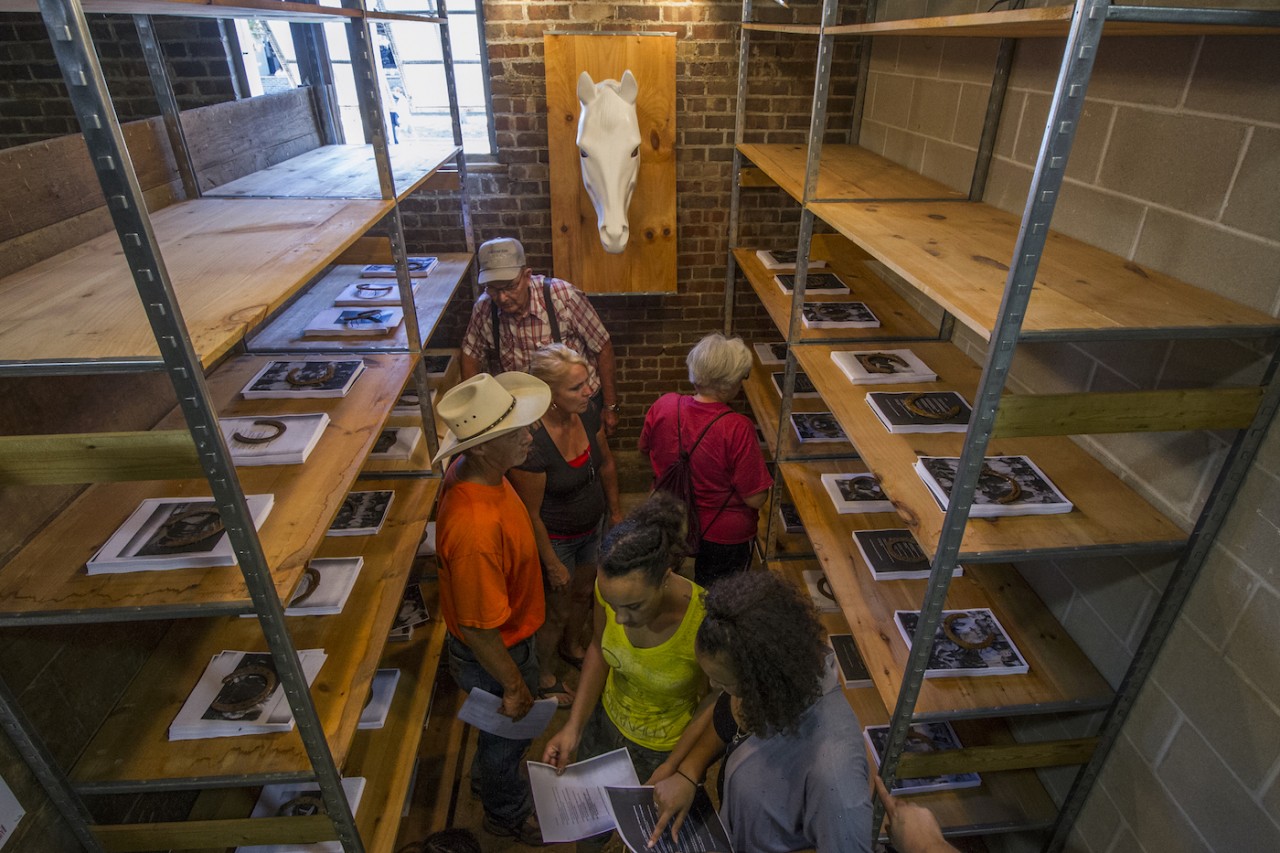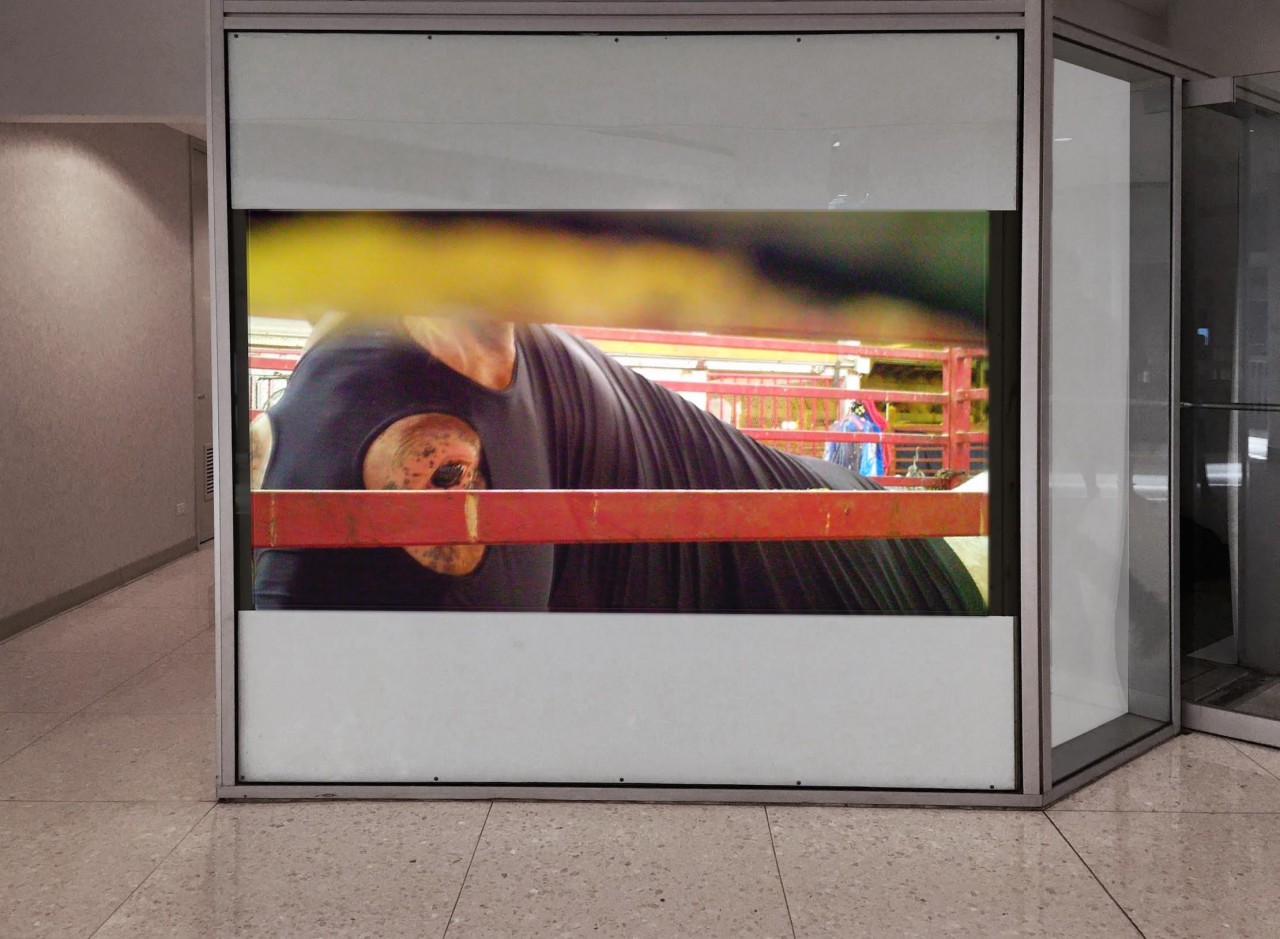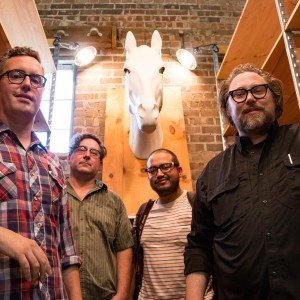


SWITCH
SWITCH was a project by M12 Studio, and the third piece in a trilogy exploring equine culture in rural America. Members of M12 Studio, Matthew Fluharty, Daniel Martinez, Richard Saxton, and David Wyrick collaborated on the Des Moines installation. On view from 11 through 21 August 2016, this temporary public artwork overlapped between two public spaces in Des Moines, Iowa. The Des Moines project was commissioned by the Greater Des Moines Public Art Foundation.
The project SWITCH was the subject of Human-Horse Bond Reflects Rural & Urban Culture by John Pemble, Arts and Culture reporter at Iowa Public Radio.
Located in the Horse Barn at the Iowa States Fair, Stall #406, was the Equine Archive, a collection of equine objects, images, and texts. The installation focused on equine husbandry and rural culture.

The stacks of paper reproductions were held in place by some 60 plus used horseshoes collected from fair presenters and beyond. Visitors perused this archive and took away printed materials that were relevant to their own experiences with equine culture. The centerpiece of the archive was a molded horse head designed for tack display, rodeo and rope training. However, M-12 repurposed the object so that the eyes of the horse-head operated as a camera. This work simultaneously doubled as a transmission site for images that were captured in the barn. Captured images from the horse-head camera were projected onto a storefront of the Capitol Square building, at 400 Locust Street in downtown Des Moines.

The installation in the Horse Barn included the Irish language poem “Switch,” which is a kind of critical/spiritual centerpiece for this project. “Switch” is by Seán Ó Ríordáin, and it was translated from the Irish by David Wheatley.
The poem was featured prominently and made available in both the physical archive at the fair and at the Capital Square projection site.
Switch
“Gwawnowwdat,” said Turnbull, “and take a good look
at the pain in a horse’s eyes.
If you’d a pair of dragging hooves on you, it’s short work
they’d make of the smile on your face.”
You could see that he understood, and his fellow-feeling
for the pain in the horse’s eyes;
and that dwelling on it so long he’d finally stolen
into the innermost space
of the horse’s pain that I saw, too, trying to plumb
the depths of pain that it felt;
until it was Turnbull’s eyes I saw starting out from
that suffering horse’s pelt.
I looked at Turnbull and saw set under his brow
as I looked him up and down twice
the two, too-big eyes that were speechless with sorrow:
the horse’s eyes.
Together, the installations at both sites encouraged visitors to draw connections between the history of rural Iowa and its contemporary agricultural landscape, and to explore new avenues for cultural connection and discourse between rural and urban spaces.
“It’s in some ways about a high level of emotional ... intelligence and sensitivity between human and horse, coming together as one way of looking at the world,” said Richard Saxton, founder of M12 and one of its four members who created “Switch”.
“The poem leads us into a conversation of being able to see the horse’s eyes through the farmer’s eyes,” Saxon said.
“Part of the underpinning of this piece, is thinking about how rural and urban communities and regions are themselves in dialogue,” commented Matthew Fluharty, M12 artist.
M12 Collective
